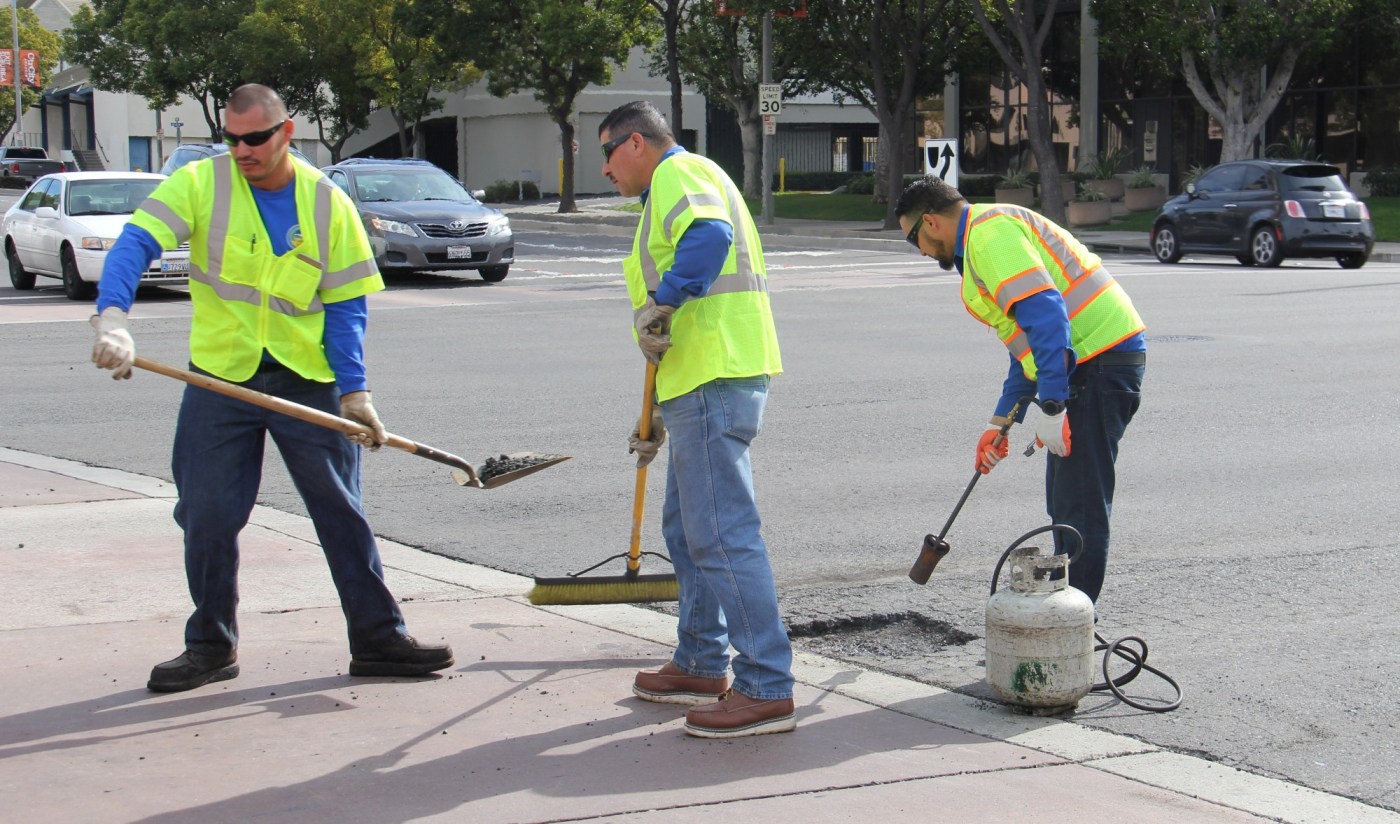After a series of winter storms over the past two months, Southern California drivers may have noticed they’re navigating more than just traffic – they’re also dodging a growing number of potholes.
Across the region, from neighborhood streets to major state highways, heavy rain has accelerated road deterioration and kept maintenance crews busy with repairs.
“We prepare for this time of year,” said Mike Lyster, spokesperson for the City of Anaheim. “Rainwater softens the surface of the road. Typically, it’s heavier vehicles – trucks- that end up pulling part of that off and creating a pothole.”
Anaheim crews patrol for damage daily, but like other cities across the region, they still rely on residents to report new potholes as they appear.
Here’s what you need to know.
How to report potholes
Public works crews throughout Southern California work year-round to maintain roads and freeways, but agencies still depend on residents to report potholes. Depending on the city or county, reports can be submitted through online forms, mobile apps, or dedicated phone lines. Some examples:
- Anaheim: Use the Anaheim Anytime reporting portal.
- Caltrans: Use the online form at csr.dot.ca.gov to report potholes on state-managed roads, including freeways and major highways.
- Los Angeles County: Use the WORKS app or call 626-675-HELP (4357).
- Los Angeles: Residents can report potholes through the MyLA311 app or website.
Richard Klug, a neighborhood council member in the Hollywood Hills, said that the system “generally works” for reporting straightforward potholes, though he’s noticed that more complex damage – such as tree roots pushing through the pavement or larger rough sections – often goes unaddressed.
Crews across the region also conduct regular patrols, looking for potholes before they’re reported, and aim to fix cavities within a few days of the initial report.
Filing claims
Potholes aren’t always clearly visible – or avoidable. If a car is damaged after hitting one, drivers can file claims to be reimbursed. After Klug drove over a pothole in 2023, which flattened two tires and their rims, he successfully filed a claim with the city for about $2,600.
Claims regarding incidents on city roads should be filed with the city, but if it occurs on a roadway in an unincorporated area, claims should be filed through the county. Incidents on freeways and highways should be routed to Caltrans.
What causes potholes?
Potholes form when water seeps into cracks in the road, weakening the base underneath. As vehicles, especially heavy trucks, pass over the compromised surface, the asphalt breaks apart and eventually forms a cavity. Rain speeds up the process by softening pavement layers, and seasonal temperature swings cause the asphalt to expand and contract.
“Often, premature deterioration of asphalt pavements is due to other factors beyond just normal wear and tear,” said Eric Dionne, spokesperson for Caltrans District 8, covering Riverside and San Bernardino counties. “We have certainly seen an influx of extreme weather over the past few years in District 8.”
He cited the 2023 blizzard, Hurricane Hillary and multiple wildfires.
Traffic patterns also play a significant role.
“One of the primary factors in forming potholes is traffic volume,” said Dan Halden, a spokesperson for the City of Los Angeles’ Street Services Bureau. “Busier corridors with more vehicles are generally more susceptible to potholes developing or damaging an existing repair.”
The rest of the season
The worst may not be over. Recent storms have already caused a spike in pothole repairs, and with more rain possible this spring, that number could continue to rise.
In Orange County, Caltrans District 12 repaired 624 potholes between January and March 2025, with more than half of those coming in March alone. Anaheim, which as crews solely dedicated to filling potholes, has filled over 2,500 cavities, on track to match last year’s total of approximately 11,000.
Los Angeles County, public works crews have already filled 4,100 potholes this year, on track to match or exceed last year’s total of 17,000.
In Riverside, the city saw a clear surge in pothole-related service requests as storms rolled through. According to city data, there were 143 requests in January, followed by 204 in February and 234 in March, a steady increase that could have been driven by the weather, Lee Withers, Deputy Public Works Director for the City of Riverside, said.
While short-term patching keeps roads drivable, agencies are also investing in longer-term solutions.
Long-term fixes are underway in the Inland Empire, Dionne said. Caltrans District 8 has resurfacing projects slated across several major corridors, including the 74, 215, 18 and 10 freeways. These projects aim to reduce chronic pavement failure and improve long-term road durability by reinforcing roadbeds to better withstand moisture and heavy vehicle traffic.
But many are still in early planning or design phases.
